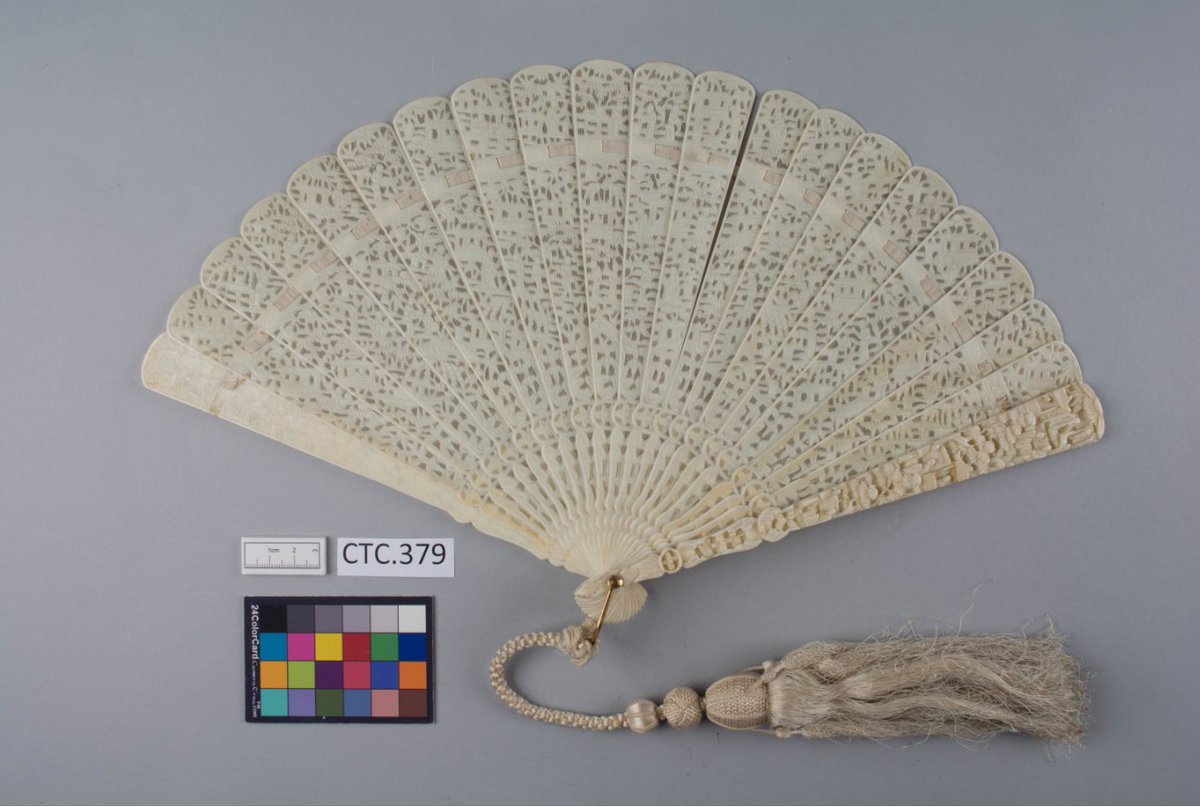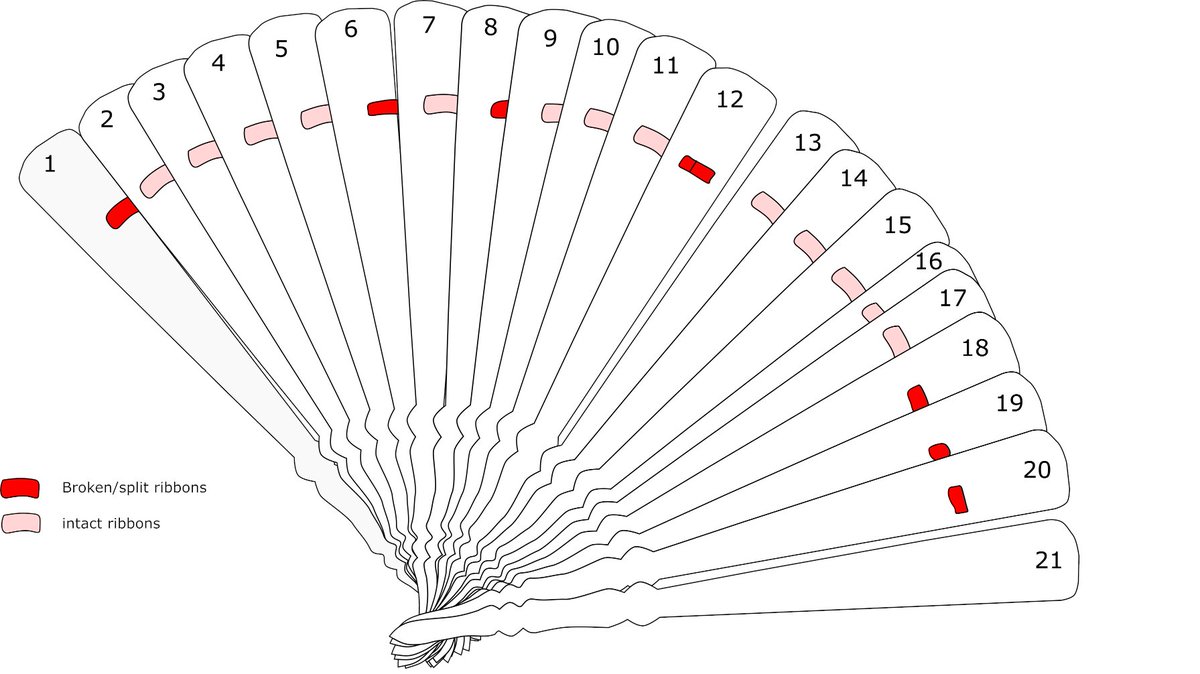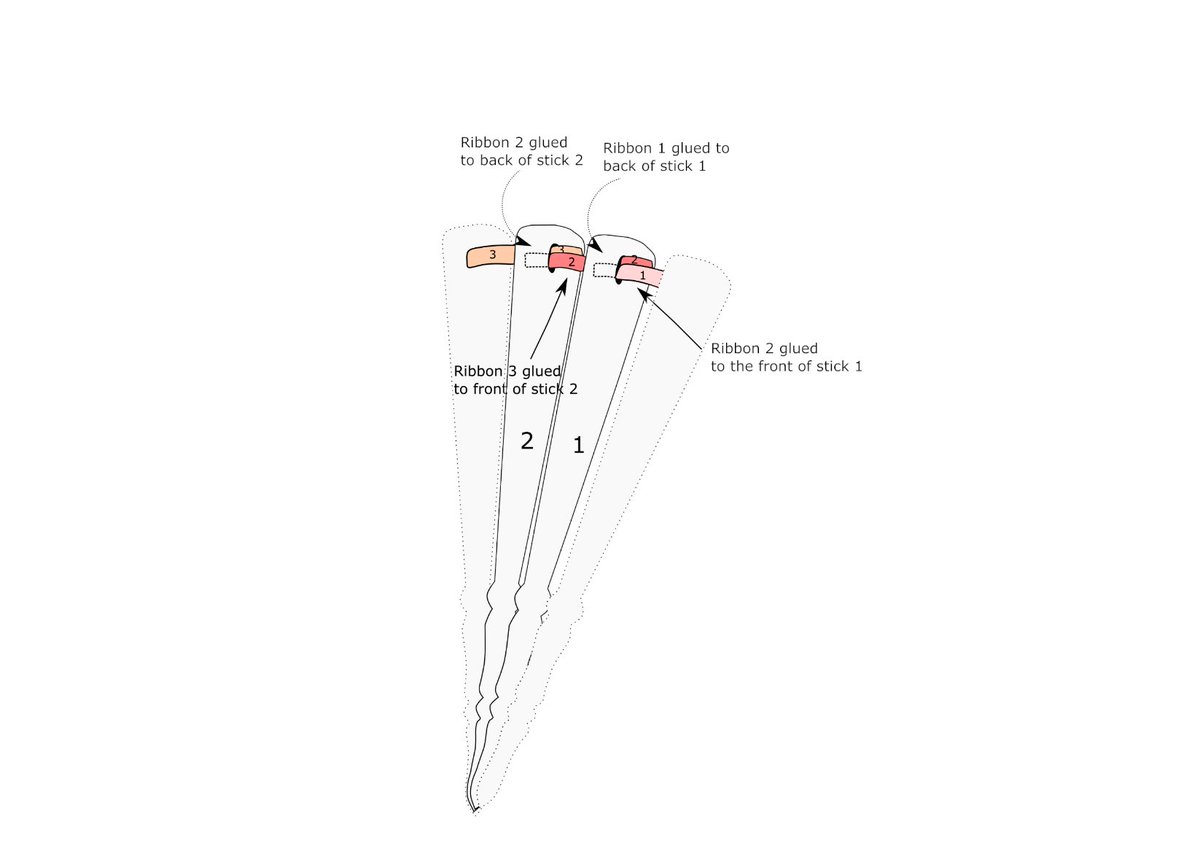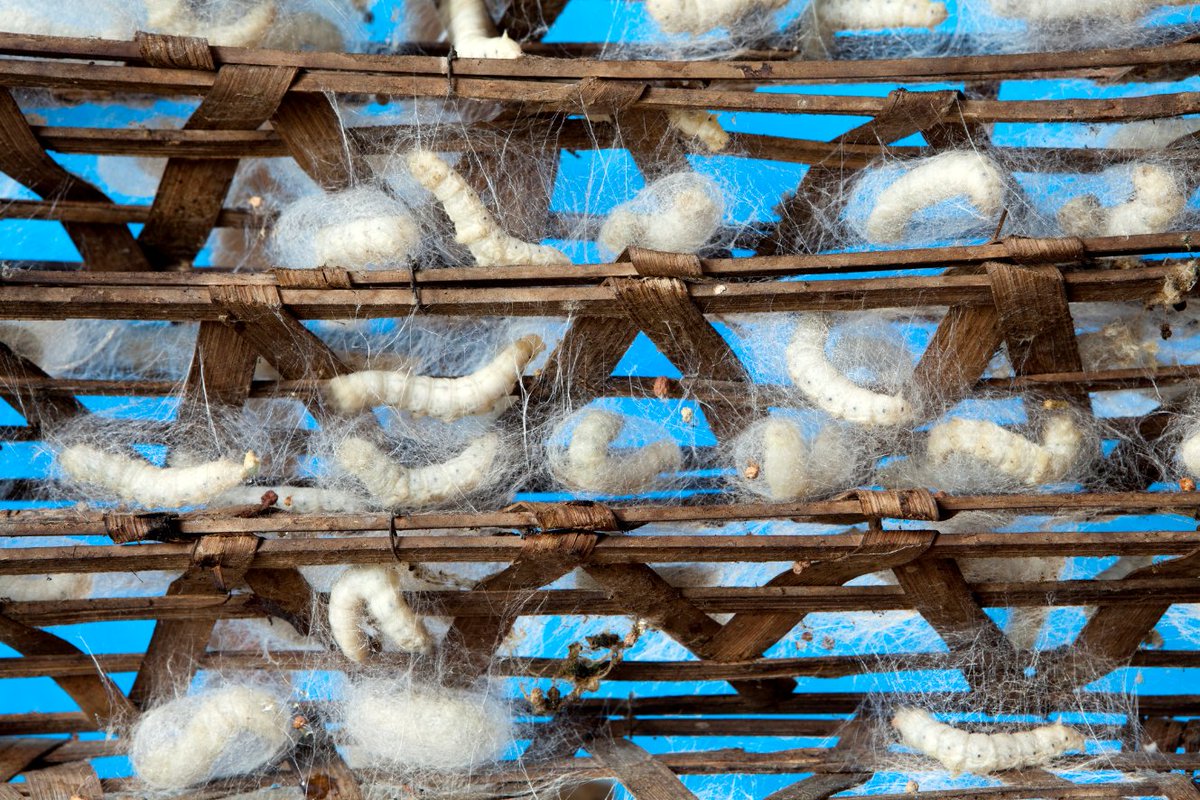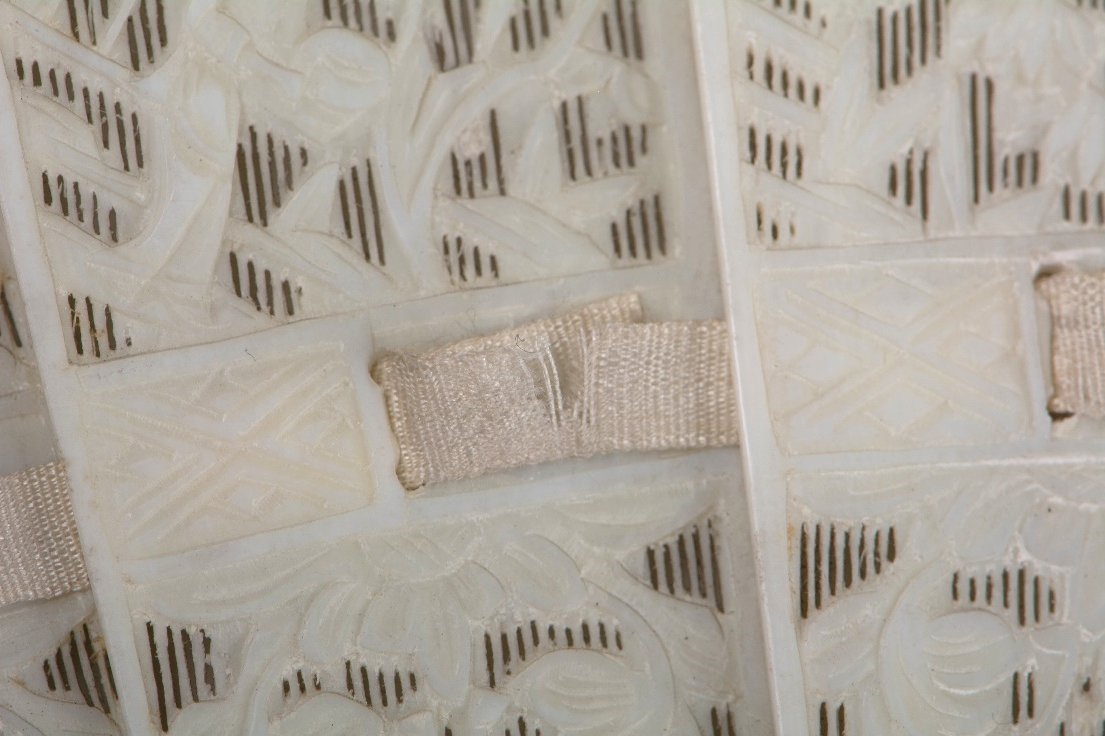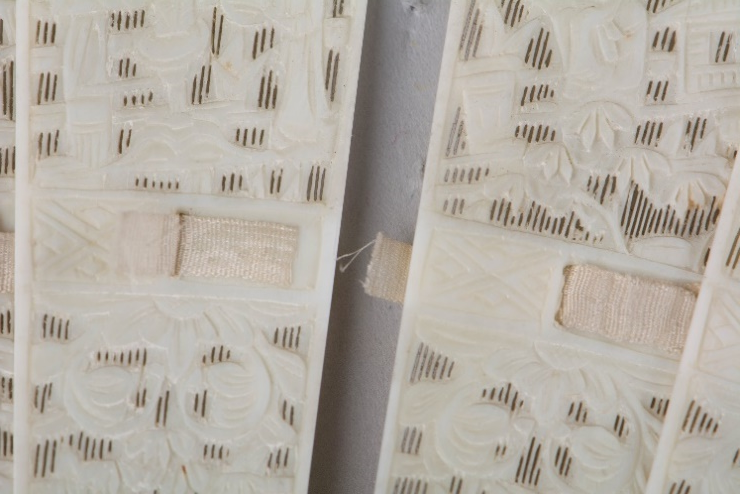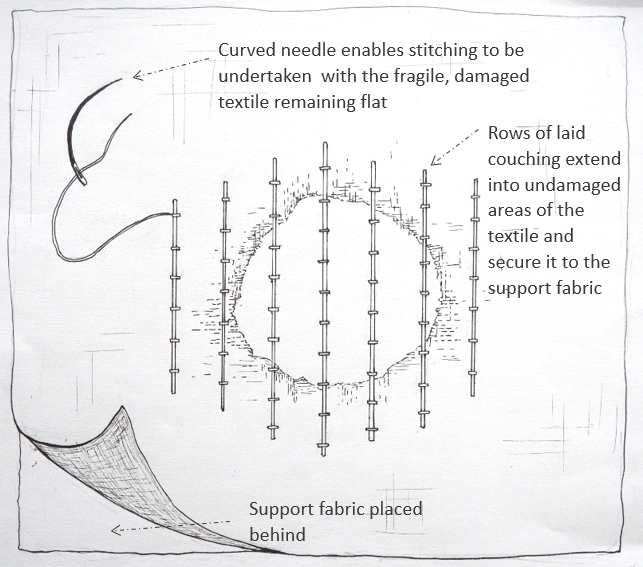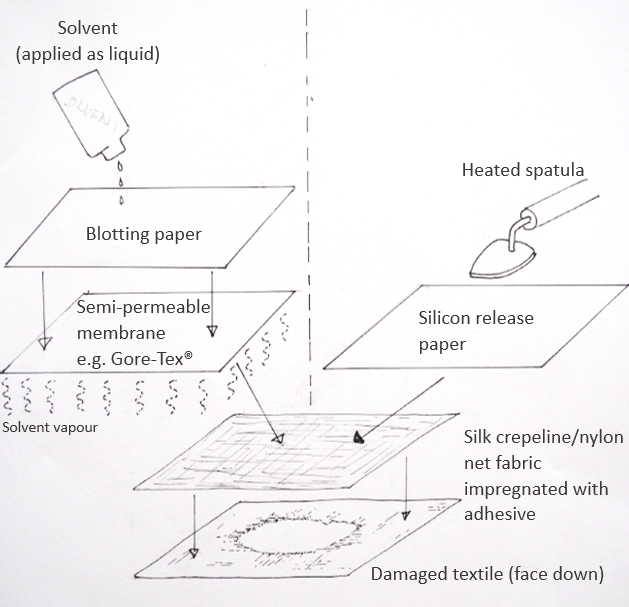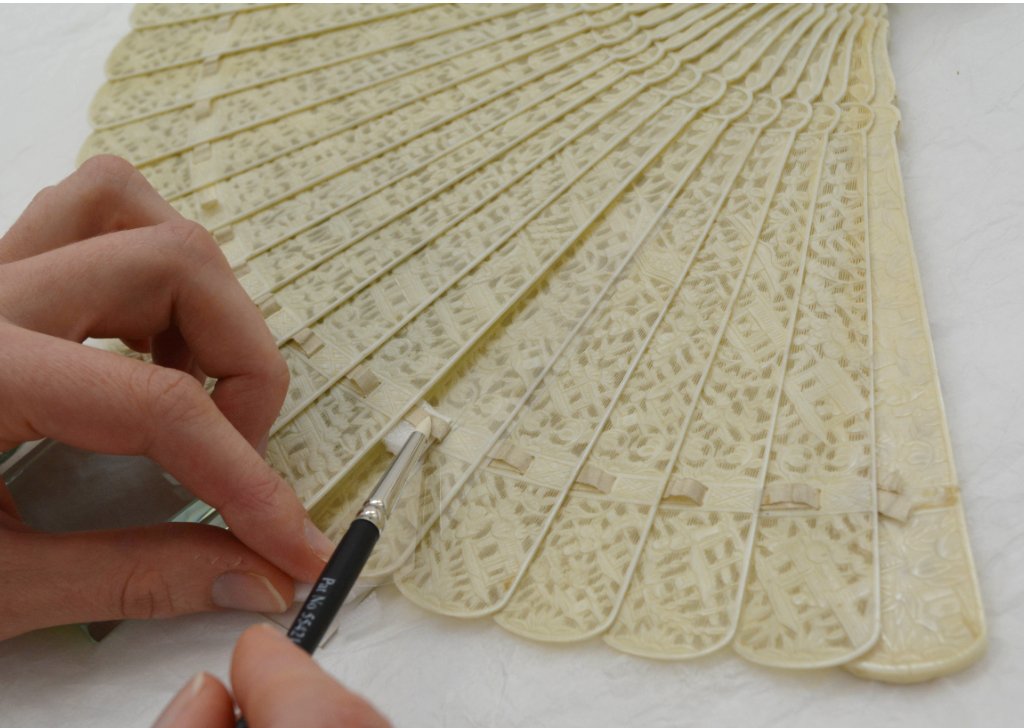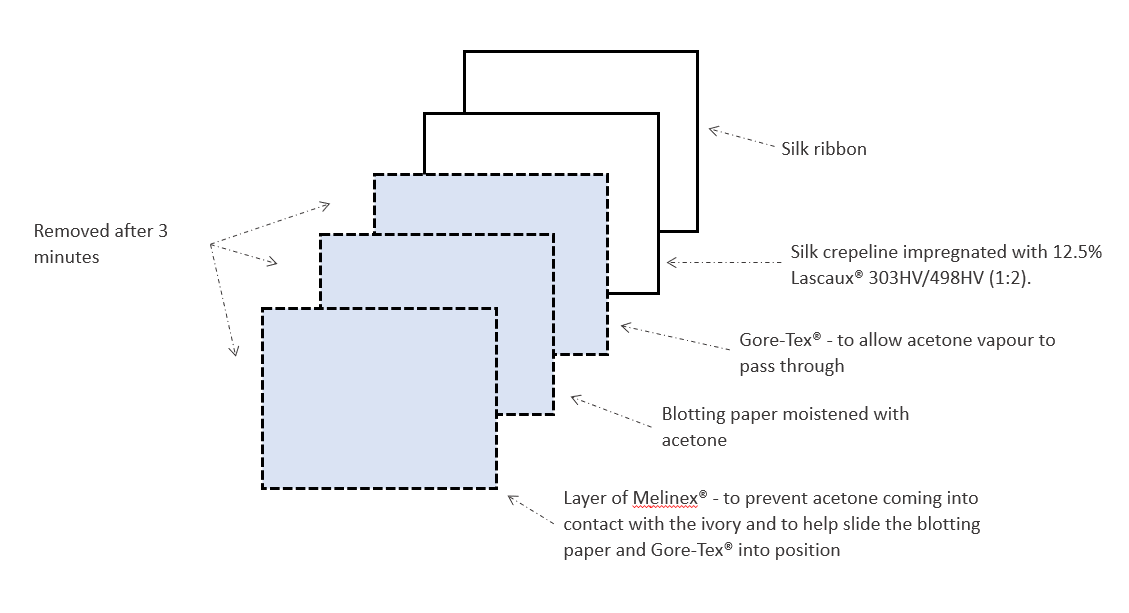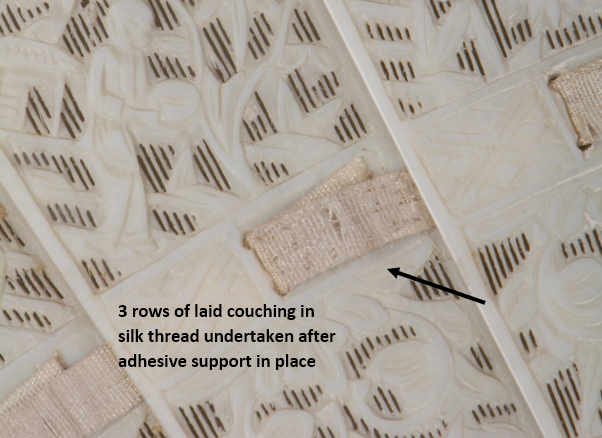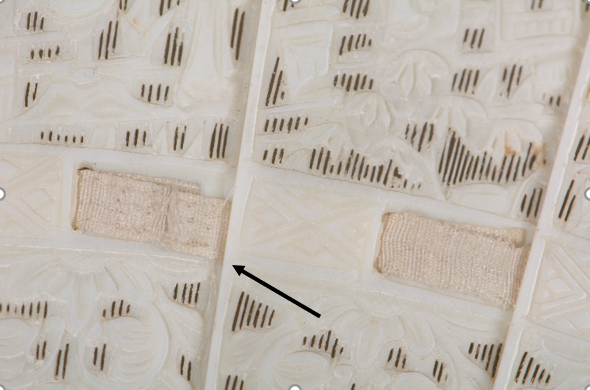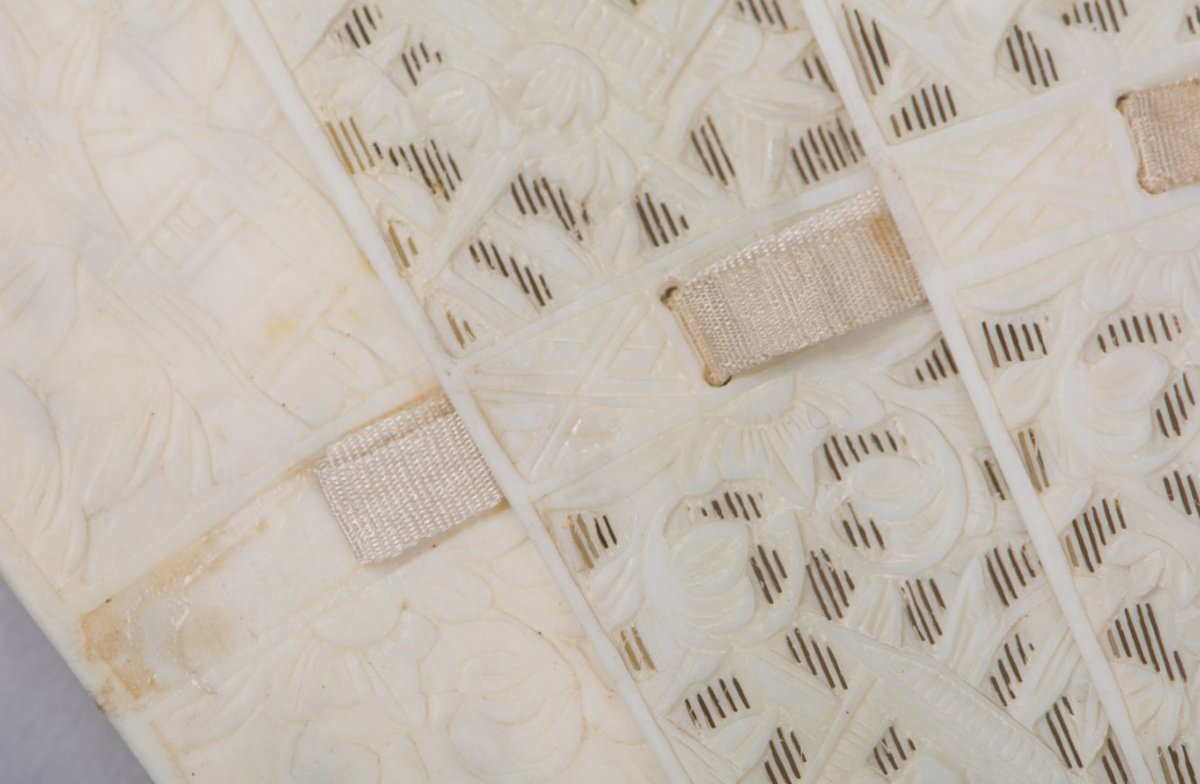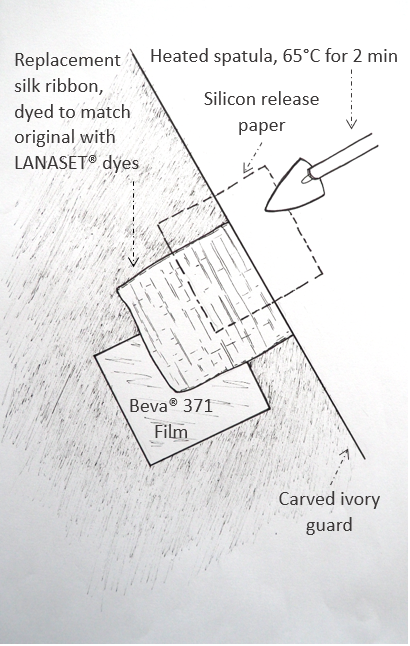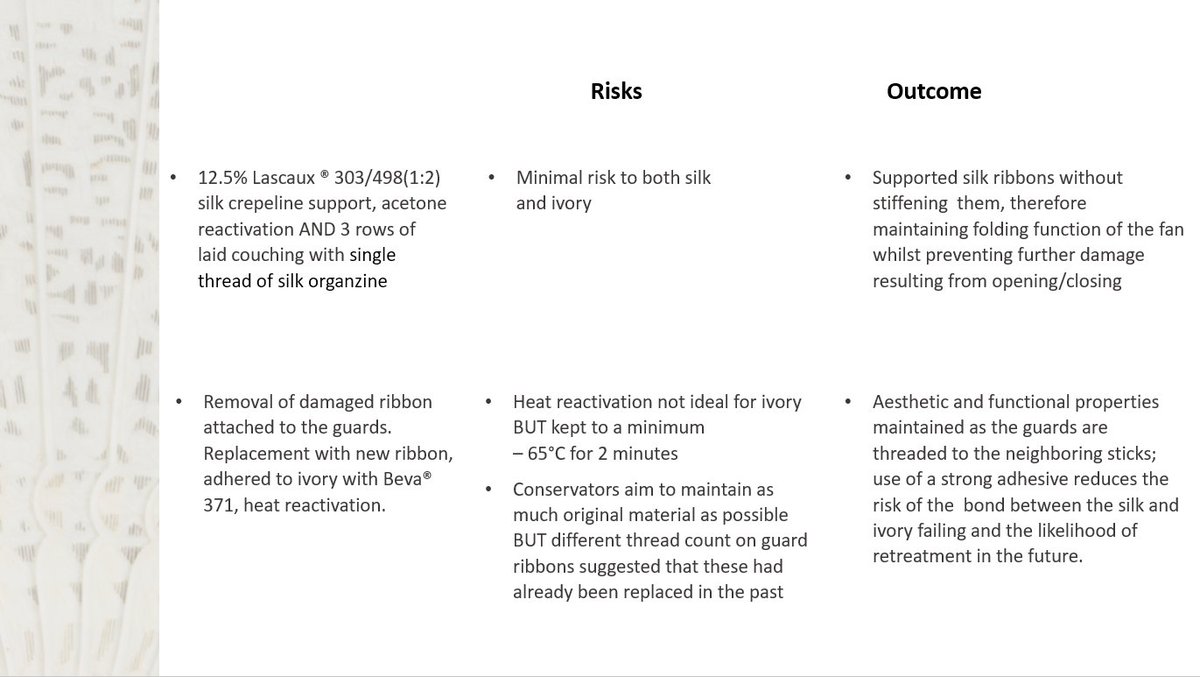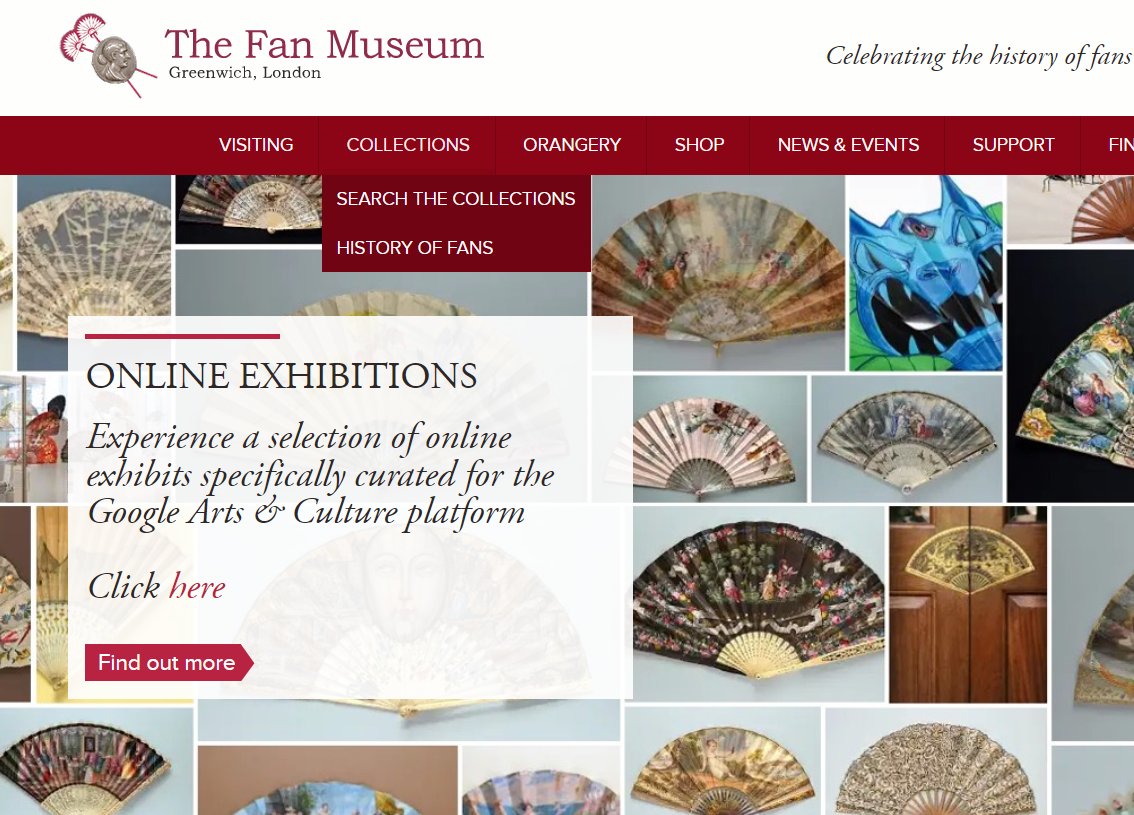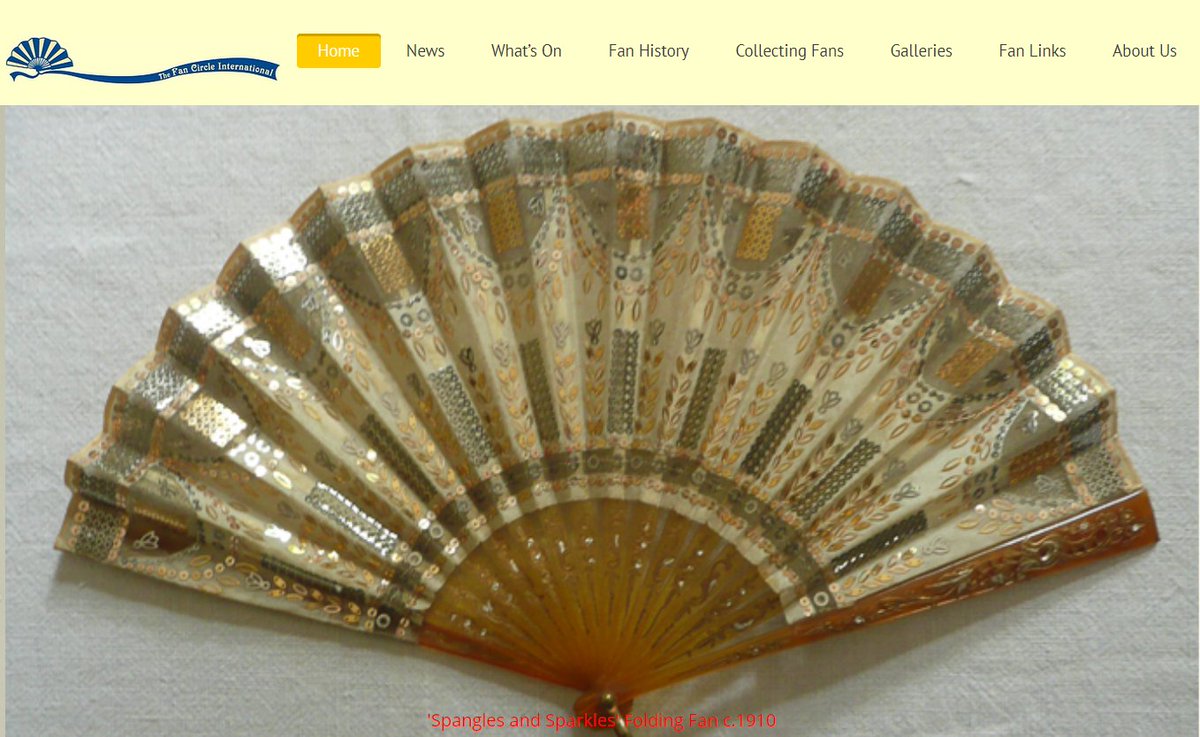1. Hello! My presentation is about conserving the silk ribbons of an ivory brisé fan. The fan is intricately carved with garden scenes and was probably made in China for export to Europe. This type of fan was popular in the 18th and 19th centuries. @Nat_SCA #NatSCAConservation
2. Brisé fans consist exclusively of sticks threaded together with ribbon. This fan has 21 ivory sticks which are threaded with strips of silk ribbon adhered to the back of one stick and the front of the neighbouring stick. #NatSCAConservation
3. Both silk and ivory originate from nature – silk from cocoons of the bombyx mori and ivory from the tusks and teeth of certain mammals. These materials, one rigid and one flexible, are perfect for creating a sturdy fan which can be folded when not in use. #NatSCAConservation
4. However, the interaction between the heavy, rigid ivory and soft, flexible silk can be problematic as opening and closing the fan places strain on the ribbons. Examination of the fan showed a total of 8 ribbons had split or partially split. #NatSCAConservation
5. A treatment had to be devised which supported the ribbons without stiffening them and preventing the fan from folding. It also had to take into account the proximity of the ivory which set additional requirements for the choice of materials. #NatSCAConservation
6. Damaged textiles are often conserved with stitched supports, where new fabric is stitched to the damaged area of an object, or adhesive supports where adhesive impregnated fabric is adhered to the damaged area via heat or solvent reactivation. #NatSCAConservation
7. Here, a combined stitched and adhesive support was most effective. A Lascaux® support provided full coverage and, with the stitching, was used at a low concentration to avoid stiffening. Lascaux® can be reactivated by acetone which is unharmful to ivory. #NatSCAConservation
8. At the guard sticks, the ribbons were doubled. They could not be conserved in the same way as the layers became too thick. Instead, replacement silk ribbon was adhered to the ivory with Beva 371® forming a strong bond between the two materials. #NatSCAConservation
9. This was a great project which made me think about balancing risks arising from treating two different materials together with the benefits to the long-term stability of the object as a whole e.g. removal of ribbons, heat reactivation. #NatSCAConservation
10. Thanks to the Centre for Textile Conservation, University of Glasgow for permission to publish and to NatSCA for organising this conference! For more about fans, see The Fan Museum, Greenwich and The Fan Circle International. @TheFanMuseum @UofGlasgow #NatSCAConservation

 Read on Twitter
Read on Twitter